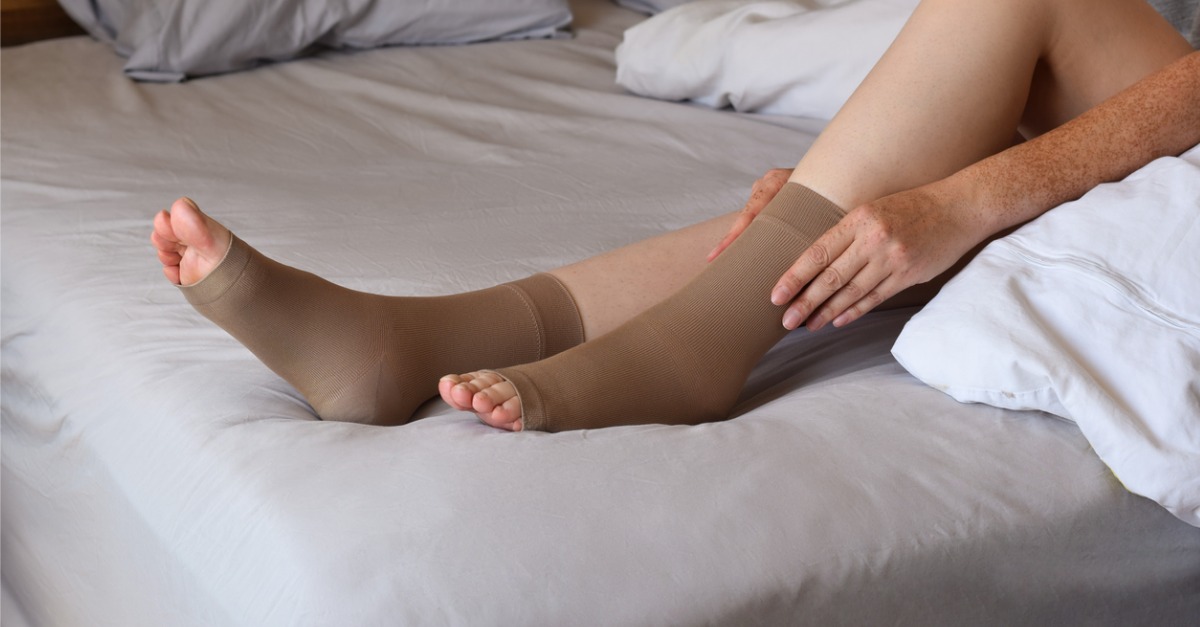Venous ulcers are wounds or open sores that typically develop on your lower leg or ankle, and fail to heal for weeks or longer. Also known as stasis ulcers, these wounds are often painful and require special care. If you suspect you could have a venous ulcer, here’s what you should know.
What Causes Venous Ulcers?
While venous ulcers can develop anywhere in your body, poor circulation issues often cause them to form in your lower extremities. For instance, when functioning properly, valves inside your leg veins reduce fluctuating blood pressure when you’re out for a walk. But when these valves are compromised, they can’t allow naturally higher blood pressure to drop in response to the motion of your muscles. When this excess pressure builds up in your lower legs, sustained venous hypertension and resulting venous wounds can form.
Venous ulcers can also result from varicose veins: large bulging veins that develop when blood pools in your lower legs. Several factors can cause varicose veins, including pregnancy, constipation, being overweight, having a family history of varicose veins, and spending long periods of time sitting.
Chronic venous insufficiency can also cause venous ulcers. Similar to varicose veins, this condition differs in that it includes swelling within your entire leg, caused by clots that damage the valves inside your veins. This swelling creates excess blood pressure which can lead to developing ulcers.
How to Care for Venous Ulcers
Care for venous ulcers often starts with addressing any underlying vein issues. For instance, deep vein thrombosis (DVT) is a serious blood clot that first demands immediate medical intervention before any resulting venous ulcers can be addressed. Treatment for DVT could include blood thinners or a catheter-directed procedure to break up the clot. Other venous conditions may not require such immediate treatment, but should still be first addressed to prevent further complications.
Once any serious medical concerns are under control, venous ulcers must receive proper care in order to heal, and prevent infection. Ulcer care may be as simple as cleaning the wound, applying a dressing, and changing the dressing regularly. Dressings containing medicine such as hydrogel or hydrocolloid can promote faster healing, and may be prescribed if you have a particularly stubborn ulcer. Your wound care specialist will offer guidance for dressing changes and which type to use.
Besides direct care for your wound, there are other methods you can use to encourage healing. For example, your doctor may prescribe an oral or topical antibiotic to reduce the risk of infections. Or, you may be advised to wear compression socks to stimulate healthy blood flow.
While proper, professional care aids in the healing process, venous ulcers can be notoriously challenging medical concerns. Generally, less-invasive approaches are prioritized, but in extreme cases, your doctor may advise surgery or a skin graft to prevent further tissue damage and to close up the affected skin.
Whether you have a venous ulcer, varicose veins, or a similar concern, turn to our vein specialists for help. With 13 board-certified surgeons on board, our experienced and compassionate team can discuss treatments to get your vein health back on track. Find your most convenient location online or call 770-423-0595 directly to schedule an appointment.





